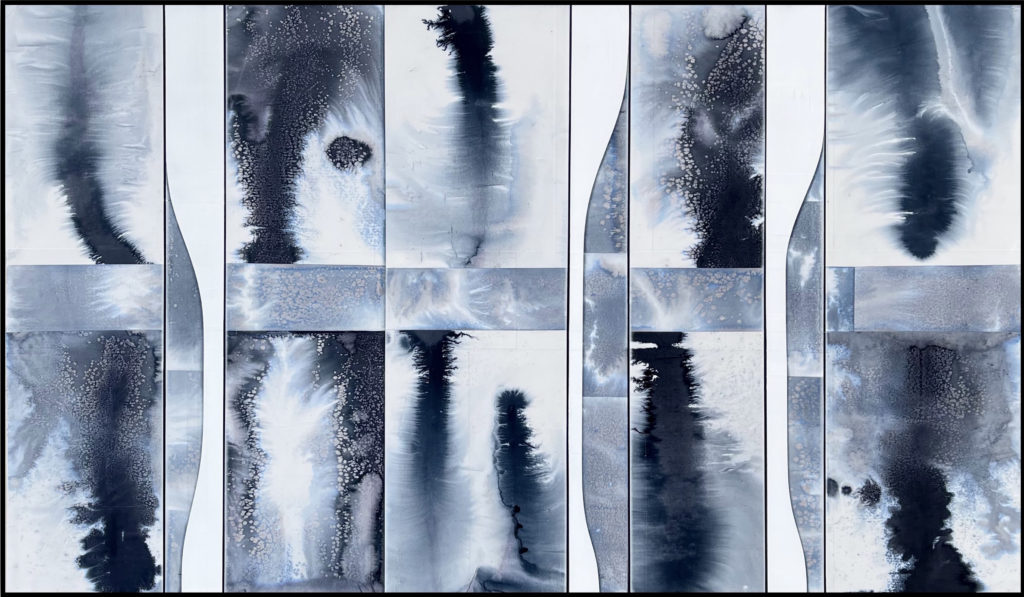Michael Kessler is a mixed media artist whose work honors the inner dynamics of the natural world. In his latest series, Kessler utilizes the fluidity of water, colored with pigment, to explore the evolution and balance of the natural world. Based in Santa Fe, New Mexico, Kessler has evolved his landscape paintings towards abstraction, focusing on the cause-and-effect of nature. The artist shares the evolution of his style, and the great pleasures of the process.
My process continues to evolve. I have become very fascinated with using collage to cut and paste paintings that I’ve made on paper.
I have always been interested in a kind of deconstruction and reconstruction of nature and the collage process really facilitates this approach. Edges and overlaps have always fascinated me and the collage process makes this very fluid. Now, the collaging process is only part of the overall approach, because I do add painted elements over top of the collage elements and in many cases it’s difficult to distinguish between the two.
The aspect of painting-on-paper has become incredibly absorbing. Paper takes wash, ink, and paint in a way that no other surface can, because it’s possible to disperse the pigment and end up with a myriad of unexpected and inexplicable incidentals, which I absolutely love.
One of my greatest pleasures is producing a group of works on paper before I go to sleep and waking up to see all of the unexpected results that occurred during the drying process overnight. I end up with stacks and stacks of works on paper which in effect is raw material that I can cut and paste and compose pictures with.
There’s no single source for the inspiration of the series I named “Casters.” I’m a fly fisher and when you’re standing in the river making casts, you’re hopeful that you’re presenting your fly to a nice big trout that’s waiting right under the water and that you will be successful in your attempt to attract that fish!

“Casters 1” and “Casters 2” are improvisations, and two-part paintings. The first part is creating the works on paper, the second part is creating the collage by gluing them down to the canvas.
The paintings are completed within two hours because the process requires wetting the canvas first to tighten it so that the paper pieces can be smoothly applied, which forces me to make decisions in the moment which can’t be undone. The painting then becomes a record of those short-term decisions.
These works are huge canvases, and are largely collaged pieces where I cut the paper and glue it onto the canvas. Of course, much of the work was done while I was compiling works on paper and deciding what kinds of marks or color fields I was wanting to achieve.
